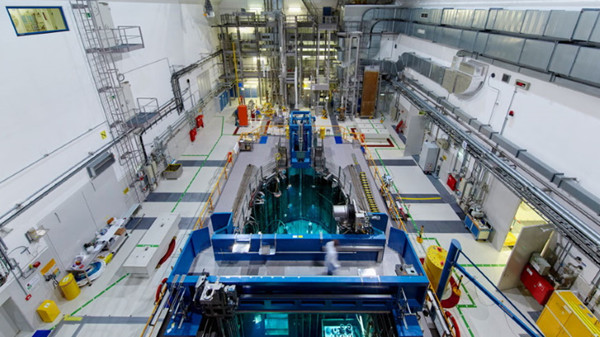France's Framatome and the Technical University of Munich (TUM) in Germany have started commercial development of nuclear research reactor fuels based on uranium-molybdenum fuel (U-Mo) alloys. The fuel can be used instead of highly enriched uranium (HEU), which is seen as a potential nuclear proliferation risk.

TUM's FRM II research reactor (Image: B Ludewig / Framatome)
Framatome and TUM will design and install the fuel manufacturing production line, and develop, produce and irradiate new fuel prototypes. The project will take place at the CERCA Research and Innovation Lab (CRIL), at Framatome's site in Romans-sur-Isère in the Drôme department of southeastern France. CERCA is Framatome's subsidiary for the fabrication of fuel elements for research reactors. CRIL is a new research and development laboratory dedicated to advancing the fabrication of nuclear fuels for medical, research and sterilisation applications.
The team plans to install an operational U-Mo fuel manufacturing line in early 2021 with the production of the first prototypes planned for 2022. TUM, Framatome, the French Alternative Energies and Atomic Energy Commission (CEA), the Institut Laue-Langevin (ILL) and the Belgian Nuclear Research Centre (SCK-CEN) will be involved in irradiation activities.
"By producing this new fuel for TUM, Framatome allows research reactors to maintain performance while using low-enriched uranium (LEU)," said François Gauché, director of Framatome's CERCA business line. "We look forward to advancing this fuel technology and developing a new fuel option for research reactors."
"TUM and Framatome's collaboration on the development of this new fuel guarantees a reliable and efficient source of neutrons for research, industry and medicine," said Peter Müller-Buschbaum, scientific director of TUM's FRM II nuclear research reactor. "This fuel is an essential tool for the development of science in Germany."
Last month, Framatome announced it had been awarded a multimillion-euro contract to modernise the crane instrumentation and control systems at the FRM II research reactor. The crane systems support various activities, such as neutron experiments, maintenance, waste treatment and fuel handling. The modernisation project involves dismantling existing components, commissioning four new cranes and implementing an automated control system. The project is scheduled for completion by the end of 2022. FRM II was built by Framatome and its predecessor companies and started operations in 2004. It is the world's most powerful and modern neutron source.
The international community is working to minimise amounts of HEU material, which could potentially be used for nuclear weapons. To that end, programmes are under way to convert research reactors to the use of LEU fuel, which does not present a proliferation risk.
The HERACLES consortium - comprising Framatome-CERCA, CEA, ILL, SCK-CEN and TUM - brings together operators of high-performance research reactors, R&D organisations and the European nuclear fuel manufacturer Framatome. The consortium concentrates most of the experience and knowledge available in Europe on the development of high-density research reactor fuels. The consortium members also have international collaborations with Idaho National Laboratory and Argonne National Laboratory in the USA and with the Korean Atomic Energy Research Institute. HERACLES is working towards the qualification of U-Mo fuels, based on a series of "comprehension" experiments and manufacturing developments.
Researched and written by World Nuclear News